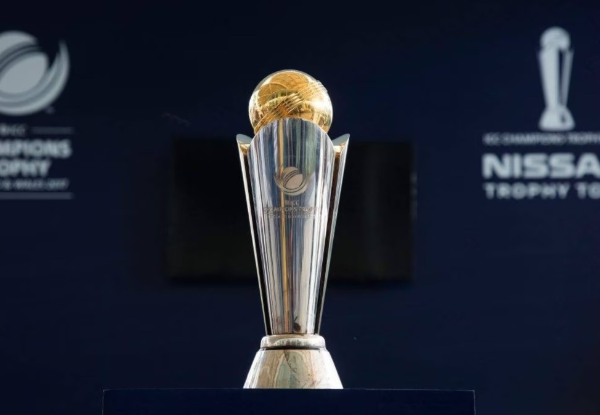ICC withdraws disciplinary proceedings against Kusal Perera
[caption id="attachment_3315" align="alignnone" width="580"] Disciplinary proceedings against Kusal Perera was withdrawn by ICC on Thursday. File Pic.[/caption]
Internet Desk: The International Cricket Council has announced that it has withdrawn disciplinary charges against Sri Lanka batsman Kusal Perera and lifted the provisional suspension previously imposed on him for alleged use of performance enhancing substances.
Perera is now free to return to domestic and international cricket without restriction and with immediate effect. The ICC has made the decision after the WADA-accredited laboratory in Qatar yesterday withdrew its original Adverse Analytical Finding following investigations.
ICC Chief Executive David Richardson said: "We wish to make it clear that there is no evidence that Mr Perera has ever used performance-enhancing substances and we wish him well in his future cricketing endeavors."
In November 2015, the WADA-accredited laboratory in Qatar reported to the ICC that urine samples collected out-of-competition from Perera, had tested positive for 19-Norandrostenedione, an anabolic steroid prohibited under WADAs prohibited list. Pursuant to the ICCs WADA-compliant anti-doping code, the full laboratory documentation packages in respect of each of the findings were reviewed by three members of the ICCs Independent Review Board (comprising of world leaders in the medical, scientific and legal fields of anti-doping), each of whom independently confirmed that Mr Perera had a case to answer.
Accordingly, on December 7, 2015, the ICC charged Perera with an anti-doping rule violation and, in accordance with the mandatory requirements of the code, provisionally suspended Perera until that charge was resolved. Since that time, the ICC has worked with Perera’s lawyers as they have attempted to identify the source of the 19-Norandrostenedione found in the samples. As part of those efforts, the ICC sought further information from the Qatar laboratory and granted various extensions of time to the player’s legal team to allow it to carry out additional analysis and investigation work. In addition, the Qatar laboratory analysed the B samples provided by Perera in January 2016, and reported that that analysis confirmed the presence of the same substance in those samples.
In a recent letter, Perera's lawyers provided an update on their investigation into potential sources of the 19-Norandrostenedione found in his samples, but also suggested for the first time that the Qatar laboratory might have misidentified impurities in the samples as 19-Norandrostenedione, given the very low concentrations of that substance found in the samples.
Disciplinary proceedings against Kusal Perera was withdrawn by ICC on Thursday. File Pic.[/caption]
Internet Desk: The International Cricket Council has announced that it has withdrawn disciplinary charges against Sri Lanka batsman Kusal Perera and lifted the provisional suspension previously imposed on him for alleged use of performance enhancing substances.
Perera is now free to return to domestic and international cricket without restriction and with immediate effect. The ICC has made the decision after the WADA-accredited laboratory in Qatar yesterday withdrew its original Adverse Analytical Finding following investigations.
ICC Chief Executive David Richardson said: "We wish to make it clear that there is no evidence that Mr Perera has ever used performance-enhancing substances and we wish him well in his future cricketing endeavors."
In November 2015, the WADA-accredited laboratory in Qatar reported to the ICC that urine samples collected out-of-competition from Perera, had tested positive for 19-Norandrostenedione, an anabolic steroid prohibited under WADAs prohibited list. Pursuant to the ICCs WADA-compliant anti-doping code, the full laboratory documentation packages in respect of each of the findings were reviewed by three members of the ICCs Independent Review Board (comprising of world leaders in the medical, scientific and legal fields of anti-doping), each of whom independently confirmed that Mr Perera had a case to answer.
Accordingly, on December 7, 2015, the ICC charged Perera with an anti-doping rule violation and, in accordance with the mandatory requirements of the code, provisionally suspended Perera until that charge was resolved. Since that time, the ICC has worked with Perera’s lawyers as they have attempted to identify the source of the 19-Norandrostenedione found in the samples. As part of those efforts, the ICC sought further information from the Qatar laboratory and granted various extensions of time to the player’s legal team to allow it to carry out additional analysis and investigation work. In addition, the Qatar laboratory analysed the B samples provided by Perera in January 2016, and reported that that analysis confirmed the presence of the same substance in those samples.
In a recent letter, Perera's lawyers provided an update on their investigation into potential sources of the 19-Norandrostenedione found in his samples, but also suggested for the first time that the Qatar laboratory might have misidentified impurities in the samples as 19-Norandrostenedione, given the very low concentrations of that substance found in the samples.












03 Comments
Karla Gleichauf
12 May 2017 at 05:28 pm
On the other hand, we denounce with righteous indignation and dislike men who are so beguiled and demoralized by the charms of pleasure of the moment
M Shyamalan
12 May 2017 at 05:28 pm
On the other hand, we denounce with righteous indignation and dislike men who are so beguiled and demoralized by the charms of pleasure of the moment
Liz Montano
12 May 2017 at 05:28 pm
On the other hand, we denounce with righteous indignation and dislike men who are so beguiled and demoralized by the charms of pleasure of the moment